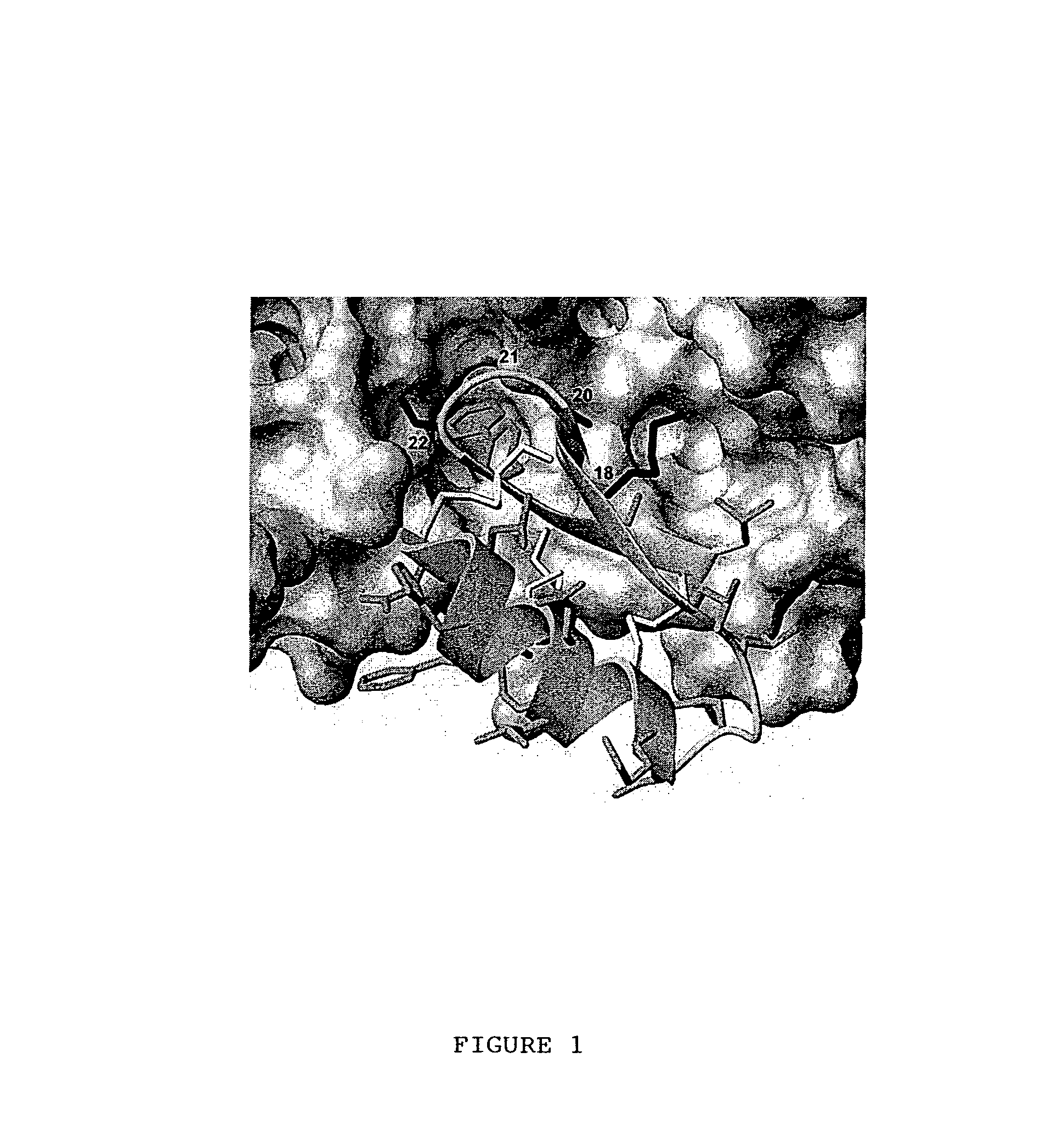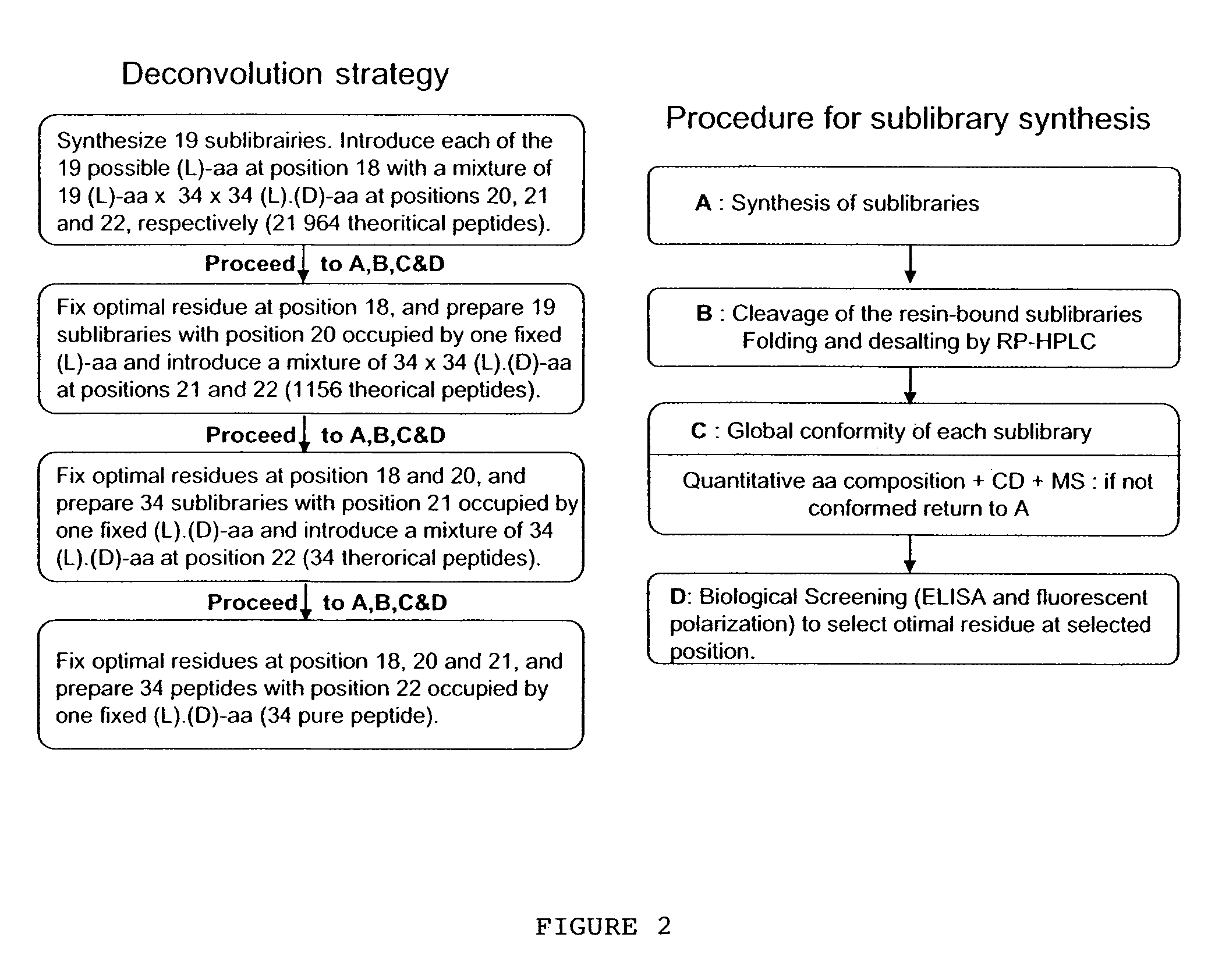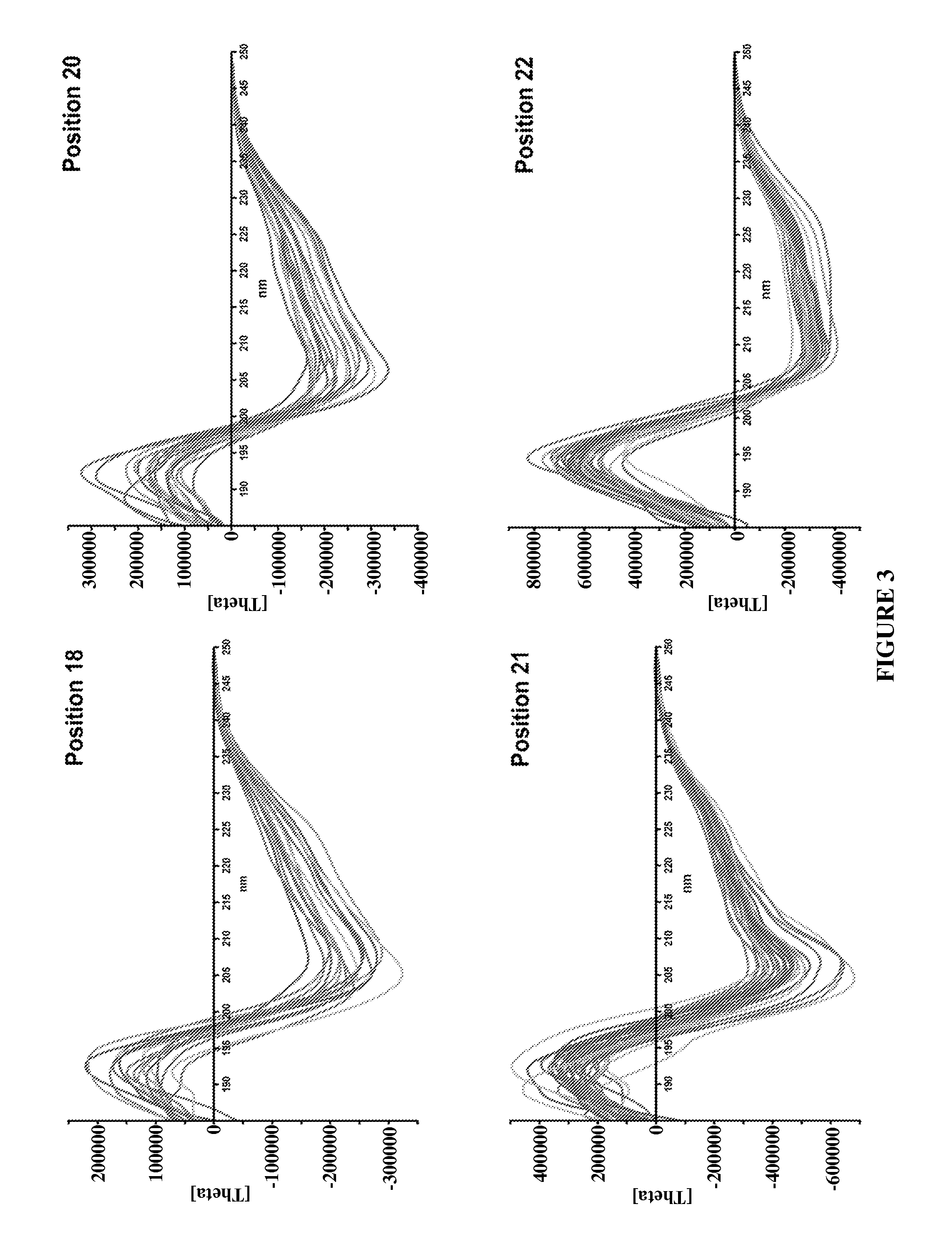CD4 mimic peptides and their uses
- Summary
- Abstract
- Description
- Claims
- Application Information
AI Technical Summary
Benefits of technology
Problems solved by technology
Method used
Image
Examples
example 2
Optimization of the Filling of Phe-43 Binding Pocket
[0146]CD4M33 has been shown to present optimal interactions with gp120 and bind to the viral particles and to the diverse HIV-1 envelopes with CD4-like affinity (Martin et al., precited). In this CD4 mimic, Phe23 is replaced by a biphenylalanine (Bip) residue, ie a phenylalanine with an additional hydrophobic phenyl moiety in the para position, FIG. 8), with the aim of increasing the interactions with the gp120 apolar “Phe43 cavity”. In order to further increase the interactions with gp120, new peptidyl CD4 mimics, where the Phe23 is replaced by some non-natural phenylalanine derivatives, were synthesized. This was achieved by synthesizing the non-natural phenylalanine derivatives which were then incorporated in the peptide of interest. Preliminary studies showed that the replacement of Phe23 by para-methylphenylalanine or by para-methoxyphenylalanine reduces the M33-gp120 affinity, while Phe23 can be replaced by β-naphtylalanine (...
example 3
Multimerization of CD4M48
1) Experimental Procedures
1.1) Peptide Synthesis
a) Synthesis of CD4M48-SH and CD4M48-hydrazino.
[0184]After peptide elongation as described in example 1, a free thiol or an hydrazino-group were specifically introduced at Lys11 by using N-α-Fmoc-Nε-1-(ivDde)-L-lysine (where ivDde is (4,4-dimethyl-2,6-dioxocyclohex-1-ylidene)-3-methylbutyl). ivDde protecting group was removed on the resin by five treatments of 5 min with 2% hydrazine in DMF. S-Acetylthioglycolic acid or tri-Boc-hydrazinoacetic acid were then coupled to the free amine using HOBt / HATU for activation and DIEA as a base. The modified mini-proteins were then cleaved from the resin with reagent K′ to give the fully deprotected crude peptides. Oxidation was performed in 0.1 M Tris / HCl buffer, pH 8.0, containing 5.0 mM GSH at a concentration of 0.1 mg / mL for 2 h. After acidification to pH 3.0 with HCl, the folded mini-proteins were then purified by RP-HPLC as described in example 1.
b) Synthesis of Poly...
PUM
| Property | Measurement | Unit |
|---|---|---|
| Volume | aaaaa | aaaaa |
| Molar density | aaaaa | aaaaa |
| Molar density | aaaaa | aaaaa |
Abstract
Description
Claims
Application Information
 Login to View More
Login to View More - R&D
- Intellectual Property
- Life Sciences
- Materials
- Tech Scout
- Unparalleled Data Quality
- Higher Quality Content
- 60% Fewer Hallucinations
Browse by: Latest US Patents, China's latest patents, Technical Efficacy Thesaurus, Application Domain, Technology Topic, Popular Technical Reports.
© 2025 PatSnap. All rights reserved.Legal|Privacy policy|Modern Slavery Act Transparency Statement|Sitemap|About US| Contact US: help@patsnap.com



